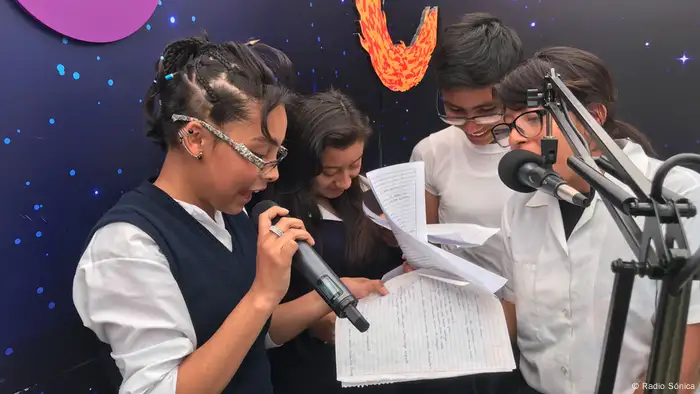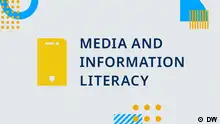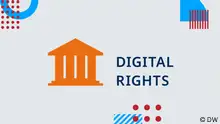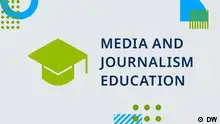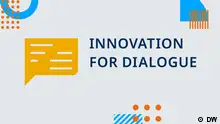Indigenous languages
Why indigenous languages need to be included in MIL
The lack of media in indigenous languages means some people are unable to access information online. Eddie Avila, MILEN member and director of Rising Voices, explains why these languages need to be catered for.
The United Nations Declaration on the Rights of Indigenous Peoples recognizes the importance of the right to free expression in one’s own native language. This fundamental right not only safeguards culture and identity, but it can protect knowledge and information that is often unique to those indigenous communities.
The media can play an important role in ensuring that this right can be exercised, as well as guarantee access to information. However, across Latin America, very few commercial mainstream media outlets provide programming in indigenous languages, and only a handful of public government broadcasters are available in indigenous languages, primarily those with a relatively higher number of speakers.
On the other hand, community radio stations have been the lifeblood for many remote communities where many residents are speakers of indigenous languages. These independent media outlets fill a need, providing local news and public service announcements to a sector of society often neglected by other forms of media.
However, simply consuming news and information in indigenous languages is only a baseline in this digital age. Support for citizens to participate in online communities and create their own media, in their own languages, is also vital for healthy societies.
Read more: Guatemala: Strengthening indigenous languages via the internet
Opportunities with digital technologies
Now more than ever, it’s easier to create your own media. The average citizen no longer needs access to a professional recording studio or to own high-priced audiovisual equipment to broadcast and publish their ideas, viewpoints, and perspectives.
With just a smartphone in hand, one can record, edit, and upload a video to the web. Sending audio clips through messaging apps also provides a new channel of communication that wasn’t available even a few short years ago.
However, with these new opportunities there runs a risk of an influx of information and greater difficulties to navigate this wealth of messages, which may also include misinformation. Many indigenous communities have been especially affected by the refugee crisis with thousands of their fellow countrymen and women heading north in search of better opportunities. However, false information that may have spread quickly may put refugees and their family at risk.
Read more: Translating Wikipedia pages into a local language in Ghana
The emerging role of indigenous language digital activists
Tech-savvy speakers of indigenous languages are playing a crucial part in creating the necessary conditions for greater online media creation. Grassroots “Do-It-Yourself” efforts have been ensuring that fellow speakers have the digital tools and skills, as well as the encouragement to communicate in their native languages.
For example, before one can write online, there must be a keyboard available to write in those languages that do not use the Latin script. Many languages use alternate characters that may not be readily available on most keyboard installations. Initiatives like Keyman are examples of free and open-source technologies that enable speakers to develop their own technology for their needs, but awareness of these tools is still lacking.
Efforts to create neologisms for terminology that had not existed previously are also empowering communities to move their language forward to adapt to the changing digital landscape.
However, just simply using the language in different formats, whether it is in the form of tweets, YouTube videos, audio podcasts, or in messaging apps, sends the powerful message that these languages are being used.
Creating media in indigenous languages
It is important to acknowledge that most indigenous languages follow an oral tradition. Writing systems did not develop until after the Spanish conquest and many more are going through different phases of development.
For example, in the Andes region of South America, Aymara radio stations have been in operation for decades providing local news. But a group of volunteers comprised of Aymara university students and recent graduates have been translating global news into Aymara. Now stories about places such as Nigeria, Indonesia, and Ukraine, which rarely appear in the local news, can be accessed.
Local projects as part of the Wikimedia movement have launched and supported projects, such as Wikipedia in Náhuatl, Aymara, Quechua, and Guaraní have appeared, with many more still in the incubator stage. Community-backed efforts to adhere to the Wikipedia guidelines of verification of sources and a neutral point of view have made Wikipedia in these languages an important exercise in media and information literacy.
Determining the need for MIL
During MIL Week, the first Latin American Festival of Indigenous Languages on the Internet will be held in Guatemala, and it is a golden opportunity to explore some of these topics, as well as gauge the need for MIL resources to reach communities of speakers of indigenous languages.
How much misinformation reaches speakers of indigenous languages and in what formats? What, if any, MIL resources are available to address the needs of these communities? What is the relationship with technology for monolingual speakers of indigenous languages for the consumption and creation of media and information?
Most indigenous language digital activists are multi-lingual and often access information in Spanish — they have a unique insight into rural and unconnected communities. For others, the ability to use technology and send and receive messages is not reliant having interfaces available in those languages. Some indigenous language speakers who don’t read or write Spanish still use WhatsApp,for example, to communicate. By intuition or associating icons with certain functions, speakers of indigenous languages can be connected to valuable information or to loved ones’ messages.
DW Akademie is a sponsor of the Latin American Festival of Indigenous Languages on the Internet.
Eddie Avila is the director of Rising Voices and a member of the Media and Information Literacy Expert Network (MILEN).
DW recommends
- Date 23.10.2019
- Author Eddie Avila
- Feedback: Send us your feedback.
- Print Print this page
- Permalink https://p.dw.com/p/3RmIt
- Date 23.10.2019
- Author Eddie Avila
- Send us your feedback.
- Print Print this page
- Permalink https://p.dw.com/p/3RmIt

